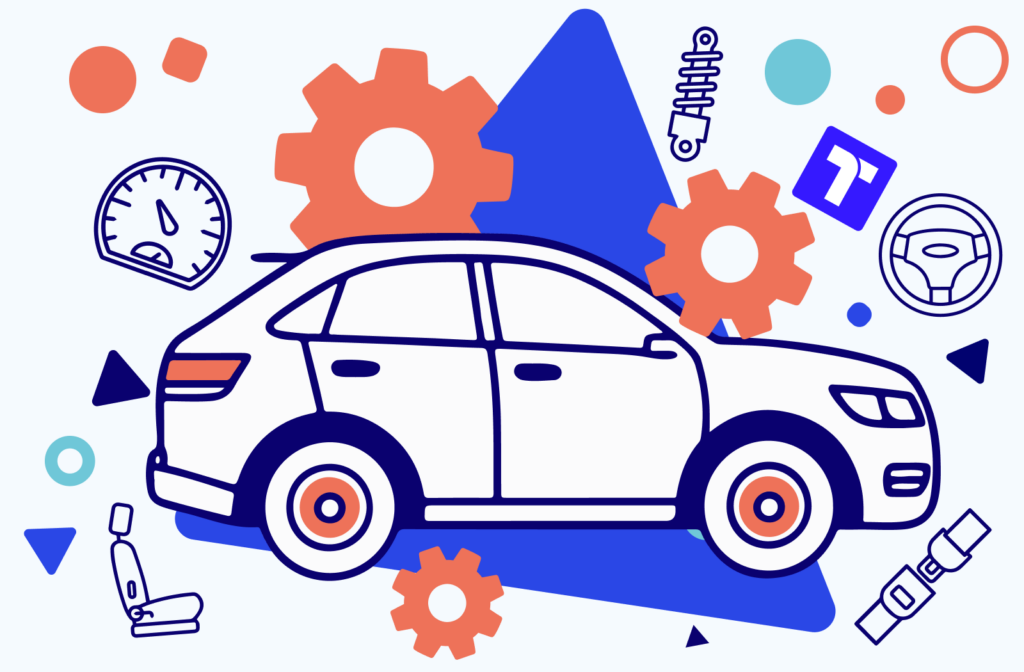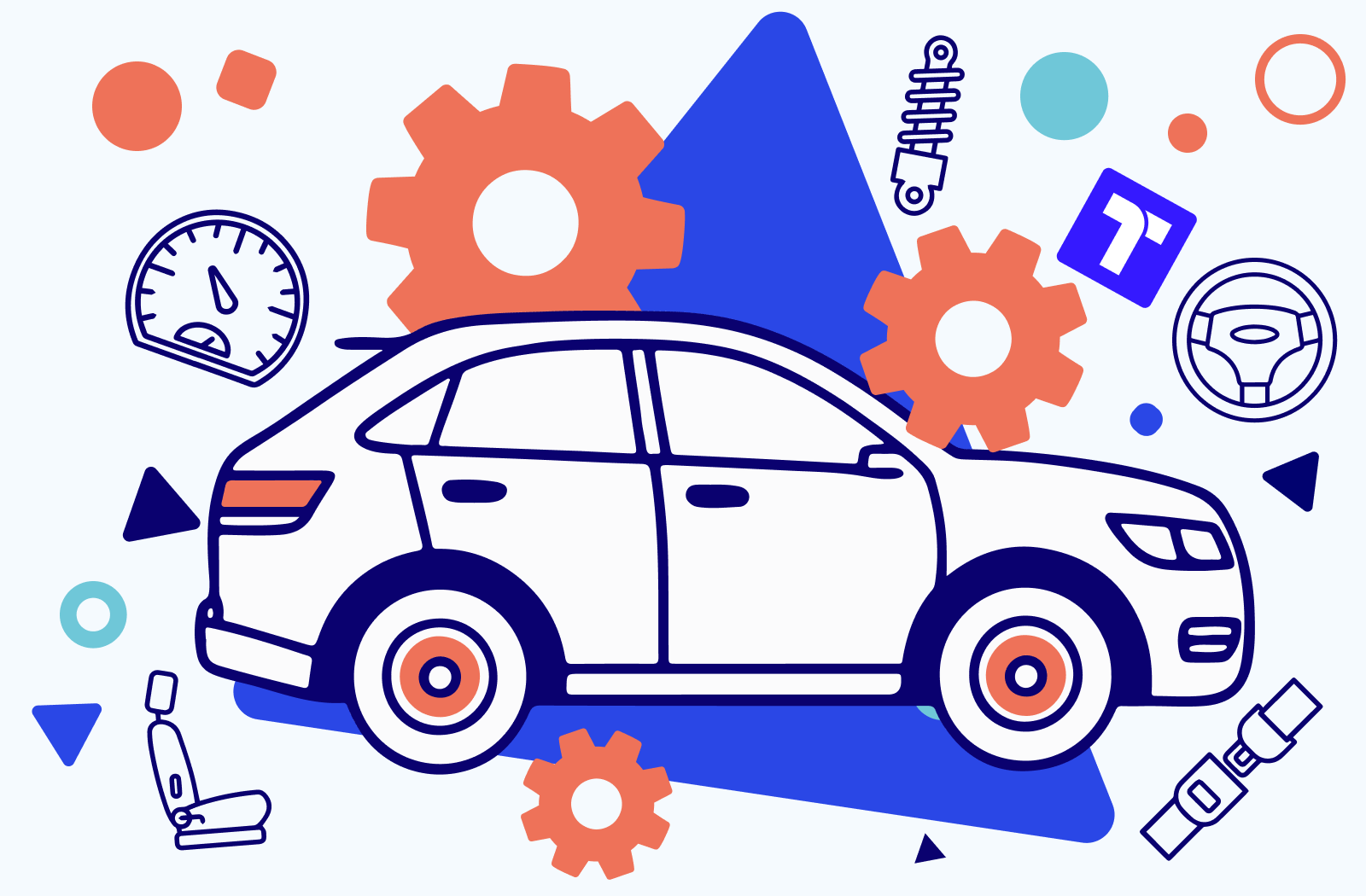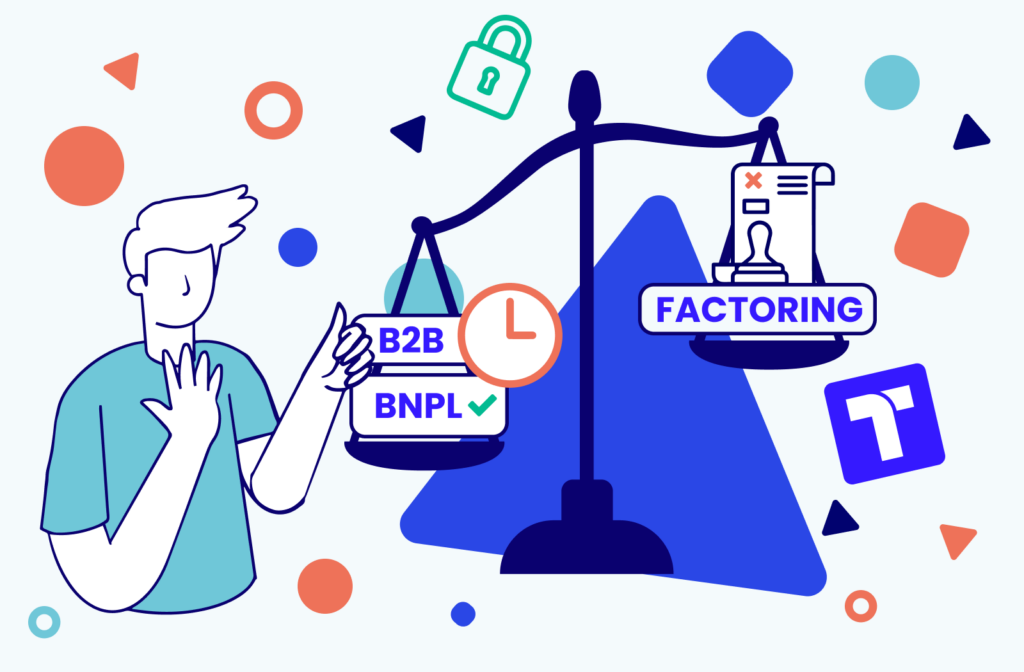
How many auto parts are in a typical car? 30,000! That means there’s huge B2B business going on behind the scenes. Your car is like a factory of B2B transactions. Let’s look at the European automotive industry and propose the perfect way to finance transactions with payment terms.
Top trends in the European automotive industry
Here are five exciting financial statistics about the European automotive industry from 2023 and 2024:
Europe Leads in Research and Development
The European automotive industry invests a lot in research and development (R&D). In fact, 32% of all the R&D in Europe comes from the car industry. This shows how important the industry is for making new technology and keeping Europe competitive in the world [1, 2].
New Car Sales Increased
In 2023, the number of new cars sold in Europe grew by nearly 14%, totaling 10.5 million cars. This is a big improvement compared to the previous years when sales were slow due to COVID-19 and other challenges. People were excited to buy new cars again [1, 3].
Electric Cars Are Getting Popular
In 2023, sales of battery-electric cars in Europe went up by 37%, reaching a market share of 14.6%. This means that out of every 100 cars sold, almost 15 were electric. People are buying more electric cars than ever before because they want to be more eco-friendly and save money on gas [1, 2].
In 2024, it’s expected that Europe will have a 41.2% growth in the sales of electric vehicles (EVs). This is faster than anywhere else in the world, showing that people in Europe really like electric cars. More people are buying electric vehicles because there are more charging stations and governments are giving incentives [1, 4).
Car Production Is Booming
In 2023, Europe produced 12.1 million cars, which is over 11% more than the previous year. Europe is now the second-largest car producer in the world. This increase in production helps create jobs and boosts the economy [1, 5].
Top 8 automotive parts stats for 2024
Here are 10 financial statistics about the European auto parts sector and show how important and vast the industry is:
Europe’s Auto Parts Market Size
The European automotive parts market was valued at over €226 billion in 2023. This means that just making and selling car parts is big business! [1, 7].
Aftermarket Value
The automotive aftermarket in Europe, which includes spare parts and accessories, is valued at over €400 billion. This sector is key due to the need to replace parts or upgrade their vehicles [1, 8].
OEM vs. Aftermarket
Original Equipment Manufacturer (OEM) parts have a larger share than aftermarket parts in Europe, but the aftermarket is rapidly growing due to the demand for spare parts [7].
Increase in Automotive Parts Production
Production of automotive parts in Europe is expected to increase by 4% annually over the next few years, driven by new technologies and innovations [1, 8].
Electric Vehicle (EV) Parts Growth
Sales of parts for electric vehicles in Europe grew by 43% in 2023, showing how people are moving toward eco-friendly cars [6, 8].
Employment in the Industry
The automotive parts industry employs over 18 million people across Europe in factories, offices, and stores [1, 8].
Exports to the World
Europe exports automotive parts to more than 160 countries, showcasing its global reach and importance in the world market [8].
The role of various countries
Germany
Germany is the largest producer of automotive parts in Europe, contributing to a big portion of the industry’s output and financial success [7, 8].
Poland’s Role
Poland is a significant manufacturer of automotive parts in Europe, providing essential components for the industry’s supply chain [7].
Impact of Brexit
The UK exported over 80% of its automotive parts to the EU in 2020, highlighting how Brexit could affect trade and industry dynamics [8].
Revenue from the UK Market
The UK automotive parts market is expected to generate revenues of €23 billion by 2030 [7].
France’s Automotive Parts Market
France’s automotive parts market is predicted to grow, contributing significantly to the European market. It’s expected to see a 5% annual growth rate [6, 7].
Italy’s Luxury Focus
Italy is known for producing luxury automotive parts, and this segment continues to thrive with high-end brands contributing to Italy’s economy [8].
These statistics paint a picture of a vibrant and essential industry that not only drives economic growth in Europe but also adapts to new trends like electric vehicles and sustainability.
How do businesses in the automotive industry finance their transactions?
How do B2B companies in the European automotive parts industry use trade finance to manage their cash flow?
B2B companies in the European automotive parts industry often use trade finance to manage cash flow by securing financial products like letters of credit, factoring, and supply chain financing.
Letters of Credit
These are used to guarantee payments to suppliers. The bank promises to pay the supplier once certain conditions are met. This helps companies buy parts without using their cash immediately.
Factoring
Companies can sell their invoices to a factoring company at a discount. This allows them to get cash right away instead of waiting for the customer to pay.
Supply Chain Financing
This involves extending payment terms with suppliers but allowing suppliers to get paid early through a financing partner. It improves working capital for both parties.
What role does credit insurance play in protecting B2B companies in the European automotive parts industry?
Credit insurance is crucial for B2B companies in the European automotive parts industry as it protects them from losses due to customer payment defaults. Credit insurance is especially important in this industry because it deals with large transactions that can significantly impact cash flow if a buyer defaults.
Protection Against Non-Payment
If a buyer fails to pay, credit insurance covers the amount, reducing financial risk.
Improving Credit Terms
Companies can offer better credit terms to customers because they have protection against non-payment risks.
Enhancing Access to Finance
Insured receivables can be used as collateral to secure loans, giving companies better access to financing options.
How do B2B companies in the European automotive parts industry leverage export financing to expand internationally?
B2B companies in the European automotive parts industry use export financing to expand internationally by reducing financial barriers and mitigating risks associated with cross-border trade.
Export Credit Agencies (ECAs)
ECAs like provide guarantees, loans, and insurance to help companies manage the risks of international sales.
Pre-Export Financing
This allows companies to access funds before shipping goods. The financing is based on confirmed export orders, helping them cover production costs.
Post-Export Financing
After goods are shipped, companies can use the invoices to get immediate cash through forfaiting or factoring. This helps maintain cash flow while waiting for payment from foreign buyers.
How Payment Terms from Terms.Tech’s B2B Buy Now, Pay Later Service Can Provide Automotive Industry Companies a Working Capital Solution
Start your engines and cross the finish line with payments success!
1. Immediate Purchase Without Immediate Payment
Terms.Tech’s B2B Buy Now, Pay Later service allows automotive companies to buy parts and materials they need right away without having to pay immediately. This means they can keep their cash on hand for other important expenses while still getting what they need to run their business.
2. Flexible Payment Options
The service offers flexible payment options, which means companies can choose to pay in instalments over a period of time that suits them. This helps companies manage their cash flow better because they don’t have to spend a large amount of money all at once.
3. Improved Cash Flow
By delaying payments, companies can use their available cash for other things like investing in new projects, hiring more employees, or buying additional inventory. This improves their cash flow, which is essential for day-to-day operations and growth.
4. Reduced Financial Strain
With Buy Now, Pay Later, companies can avoid taking out loans or using credit lines, which often come with long waiting periods. This reduces financial strain and allows them to operate more efficiently without worrying about immediate payments.
5. Support for Business Growth
The ability to delay payments while still accessing necessary products can help automotive companies grow faster. They can take advantage of new opportunities, expand their operations, and increase production without being held back by cash flow limitations.
Provide payment terms
Find out how Terms.Tech can allow B2B merchants and marketplaces in the automotive industry to provide payment terms to their customers today!
Get in touch with one of our B2B BNPL experts!
Sources
1 – Economic and Market Report: Global and EU auto industry – Full year 2023
2 – Allianz Global Automotive Report 2024
3 – Economic and Market Report: state of the EU auto industry – Full-year 2022
4 – Key figures on the EU auto industry
5 – ACEA Pocket Guide 2023/2024
6 – Mordor Intelligence: Europe Auto Parts Research Reports & Market Industry Analysis



